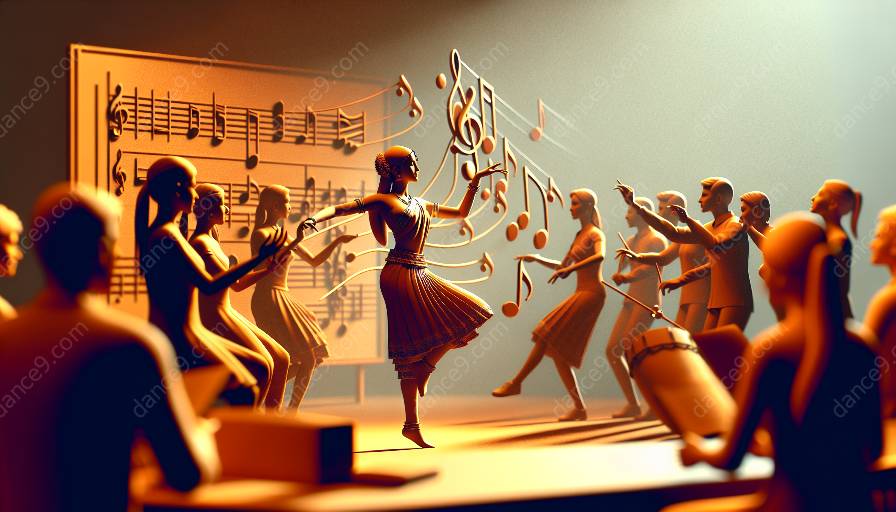Music has been an inseparable companion of dance since the early days of human civilization. The dynamic interplay between music and dance has transcended cultural boundaries and has always been a subject of fascination. This topic cluster aims to delve into the profound influence of music on the choreography process in dance, investigating its impact on emotional expression, narrative interpretation, and technical composition.
The Emotional Influence of Music on Choreography
Music is a powerful medium that evokes and amplifies emotions. In the realm of dance choreography, music plays a significant role in shaping the emotional landscape of a performance. Choreographers often draw inspiration from the mood, tempo, and dynamics of a musical piece to craft movements that resonate with the audience on an emotional level. A melancholic melody may prompt the choreographer to explore themes of loss and longing, while an upbeat rhythm can inspire lively and exuberant choreography, creating a dance that uplifts the spirits of the viewers.
Intertwining Narratives: Music and Dance
Another intriguing aspect of the relationship between music and choreography lies in their ability to intertwine narratives. Music has an inherent storytelling quality that can influence the choreographer's creative process by providing a conceptual framework for the development of dance compositions. Whether it's the evocative lyrics of a song or the evocative instrumental arrangements, music can be a catalyst for the choreographer to conceptualize and express narratives through movement. Through skillful integration, the harmonious convergence of music and dance can convey profound narratives that resonate deeply with the audience.
Technical Composition: Music as a Guiding Force
From a technical standpoint, music serves as a guiding force for choreographers, influencing the structure, timing, and spatial dynamics of dance compositions. The rhythmic elements of music provide a natural framework for choreographing movements, allowing dancers to synchronize their steps and gestures with the musical beats. Furthermore, the nuances of music, such as accents, pauses, and variations in tempo, offer choreographers a rich palette to create dynamic and visually engaging choreography that complements the musical nuances.
The Synergy of Dance and Music Studies
Understanding the intricate relationship between music and dance choreography is paramount in both dance and music studies. For dancers, a deep appreciation of how music influences choreography enhances their interpretive skills and fosters a more nuanced understanding of the emotional and narrative dimensions of dance. On the other hand, musicians who explore the connection between music and dance gain insights into the rhythmic structures, melodic phrasing, and dynamic nuances that contribute to creating compelling scores for dance performances.
The Art of Expression: Fusion of Music and Choreography
In conclusion, the influence of music on the choreography process in dance is a multifaceted and profound aspect of the performing arts. The dynamic interplay between music and dance not only shapes the emotional, narrative, and technical dimensions of choreography but also enriches the artistic expression and cultural significance of both art forms. Through the fusion of music and choreography, dancers and choreographers embark on a creative journey that transcends boundaries, embracing the power of music as a transformative force in the art of dance.

















